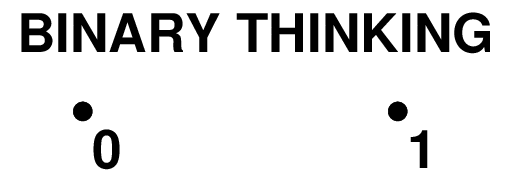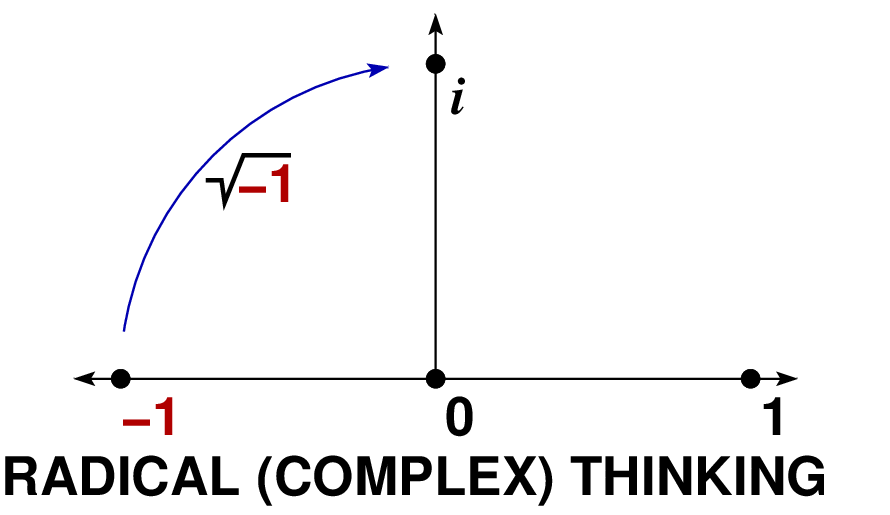Let This Radicalize You
Bowler Hat Science from Matthew R Francis
“Let this radicalize you rather than lead you to despair.”
-Mariame Kaba
Honestly, things in general are not good right now, both in the United States where I live and abroad. Fascism, climate change, and war are on the rise. Just summarizing everything going on would take up the whole newsletter, and even assuming I remember it all, it wouldn’t serve us well here — not to mention that I’m a science writer, not a political thinker.
However, science is not separate from the rest of humanity, and as we’ve learned from history, science is one of many things that is in danger in times of trouble (particularly where fascists are concerned). Rather than talk specifically about things science can do to address this moment in history, let’s try a metaphor from math inspired by organizer Mariame Kaba, the source of the quote that starts this newsletter. (I have simplified the math because — again — this is about the metaphor, not completeness.)
Yes/no. True/false. On/off. Good/evil. Male/female. Democrat/Republican. Communist/Freedom. Eternal reward/eternal torment. These are all examples of binary concepts, where there are only two mutually-exclusive options. While sometimes the answer is yes or no, binary thinking is more often limiting. Here’s a visual:

For digital computers (the only kind most of us ever run into), binary is just how they work: circuits are on (1) or off (0). By building up from these bits, computer represent more complex mathematics and symbols for language, but it’s all binary underneath. In binary thinking, by contrast, there is often a strong value attached to one option: men are superior (1) to women (0), and no other gender options even exist. In certain binary religious thinking, you are either bound for heaven (1) or hell (0), and simple errors in belief can make all the difference about where you end up. For white supremacists, you are white (1) or non-white (0), and other races are regarded strictly through that lens.
A simple way to break from the binary is one-dimensional thinking:

The existence of numbers other than 0 and 1 is definitely an improvement! I’ve seen people use this sort of thing as an analogy for non-binary folks, where men (1) and women (0) are joined by folks (numbers between 1 and 0) who don’t fit neatly into those categories. But it’s still limited and often very value-laden thinking. After all, we learned in elementary school how to rank numbers. Worse still, some things — or people — could be assigned negative value, less than nothing, not even worthless but less than worthless.
So let’s talk about radicalization. Often that word is reserved for violent and dangerous ideas: someone becoming radicalized by white supremacy or “men’s rights activists”, and hurting others. However, the word “radical” derives from “radix”, meaning “root” (where we also get the word “radish”). A human radical seeks to change things at their root. A chemical radical, which you sometimes see referred to as a “free radical”, has an unpaired electron, making it easy to join up with a complementary radical.
In math, the most common radical you see is a “square root”, which is a way to split numbers into two identical parts. Two times two equals four, so the square root of four is two — or to phrase it differently, two is the radical of four. When someone says you are less than nothing, or your ideas are less than nothing in their one-dimensional thinking, as Kaba says, let this radicalize you rather than lead you to despair. In math, the square root of negative one (-1) is an entirely new type of number: the imaginary number i. In math terms:
You can’t think of imaginary numbers one-dimensionally, and when you combine them with ordinary ("real”) numbers, they’re called complex numbers:

Despite the name, imaginary numbers are essential in math, physics (particularly the quantum physics that drives all of our modern technology), engineering, and other ventures. I like thinking of “imaginary” not in a pejorative sense but in the sense of imagining bigger things, going beyond ordinary to create the unexpected. Those who seek to limit us aren’t even capable of such imagination.
Complex numbers are two-dimensional, but as it turns out, there are many ways to take the square roots of negative numbers! One of these ways is a set of numbers called quaternions, which are used to rotate computer graphics, steer robots on Mars, and guide space probes through the Solar System. (Quaternions are my favorite thing in math, but I’ll spare you talking about them now since this piece is already too long!)
Just as rethinking what “number” even means brings us to new places in science, radical thinking lets us go far beyond restrictive categories while opening new categories of thought past those set for us by binary and one-dimensional thinkers.
On this July 4 (when I’m writing this) after the US Supreme Court declared that certain Presidents can openly commit crimes while also restricting others’ freedoms with the threat to do more in the future, it’s easy to fall into despair. Instead, let this radicalize us to imagine a multidimensional world even if we can’t yet see how to get there.